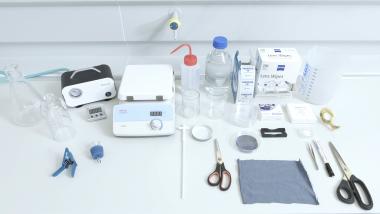Neues Prüf-Kit für textilen Mikrofaseraustrag
In Kooperation mit dem Prüfdienstleister Hohenstein bringt Under Armour ein neu entwickeltes Prüf-Kit auf den Markt. Dieses hilft Textilfirmen entlang der Wertschöpfungskette dabei, bereits während der Produktentwicklung Materialien mit einem geringen Mikrofaseraustrag zu entwickeln. Die Unternehmen führen die Prüfung mit dem Kit selbst durch oder können Hohenstein als Prüfdienstleister beauftragen.
Das Kit wird einmalig erworben, anschließend können Anwender Verschleißmaterialien bei Projektpartner James Heal nachkaufen. Mit Hilfe des neuen Kits kann Under Armour die Qualität und Ausscheidungsrate der Materialien von Zulieferern verlässlich beurteilen.
Für bestehende Hohenstein Kunden stellt das Prüf-Kit ebenfalls eine sinnvolle Ergänzung im Rahmen ihrer Mikroplastikprüfungen dar, da es eine relativ kostengünstige, schnelle Vorprüfung ermöglicht und dadurch frühzeitig für bessere Ergebnisse am Endprodukt sorgt.
Bei der Herstellung, dem Tragen und der Reinigung von synthetischen und natürlichen Stoffen kommt es zu einem natürlichen Faserverlust in unterschiedlichem Ausmaß. Hohenstein und Under Armour versprechen, dass ihre Testmethode der Industrie hilft, ihren eigenen Beitrag zur Mikrofaserproblematik besser zu verstehen und diesen zu reduzieren.
"Bislang war die Integration von Faserabrieb-Tests in die Forschungs- und Entwicklungsaktivitäten der Industrie mit einem erheblichen Zeit- und Kostenaufwand verbunden", sagte Kyle Blakely, Senior Vice President of Innovation bei Under Armour. "Wir bei Under Armour sind der Meinung, dass ein frühzeitiges Eingreifen zur Verringerung der Faserablösung von entscheidender Bedeutung ist, weshalb unsere Testmethode speziell darauf ausgerichtet ist, diese Zeit- und Kostenbarrieren zu beseitigen.“
Hohenstein







